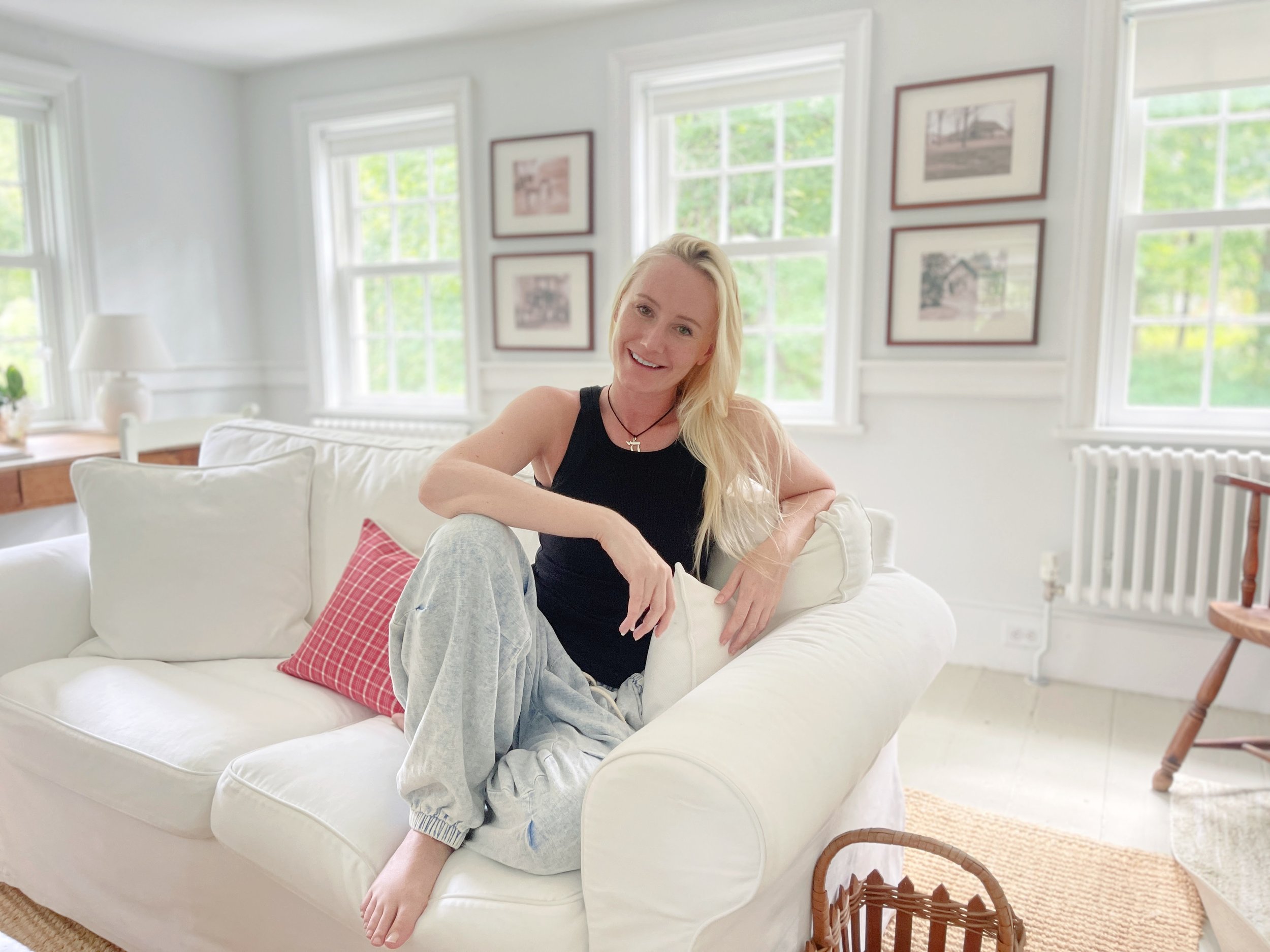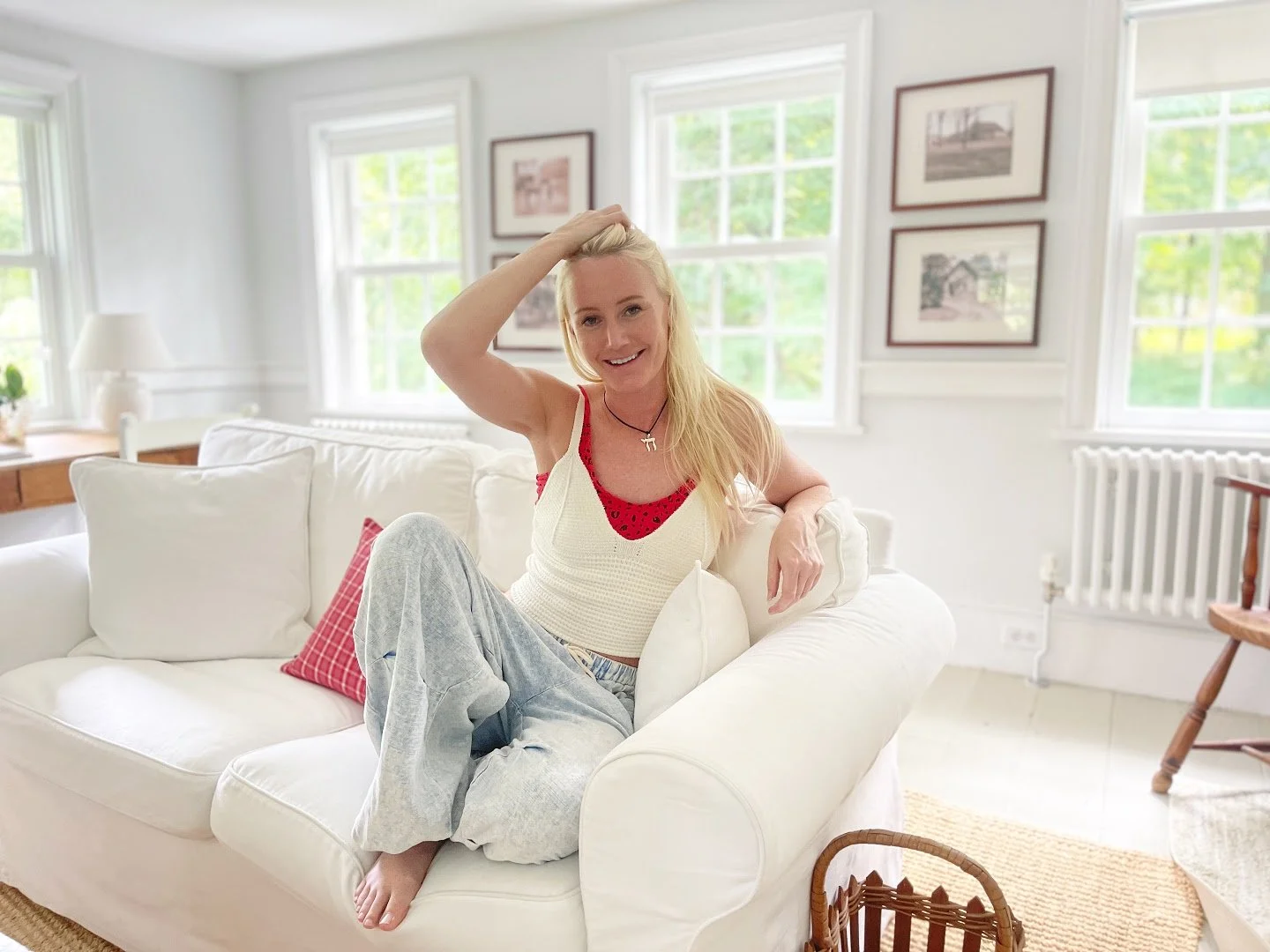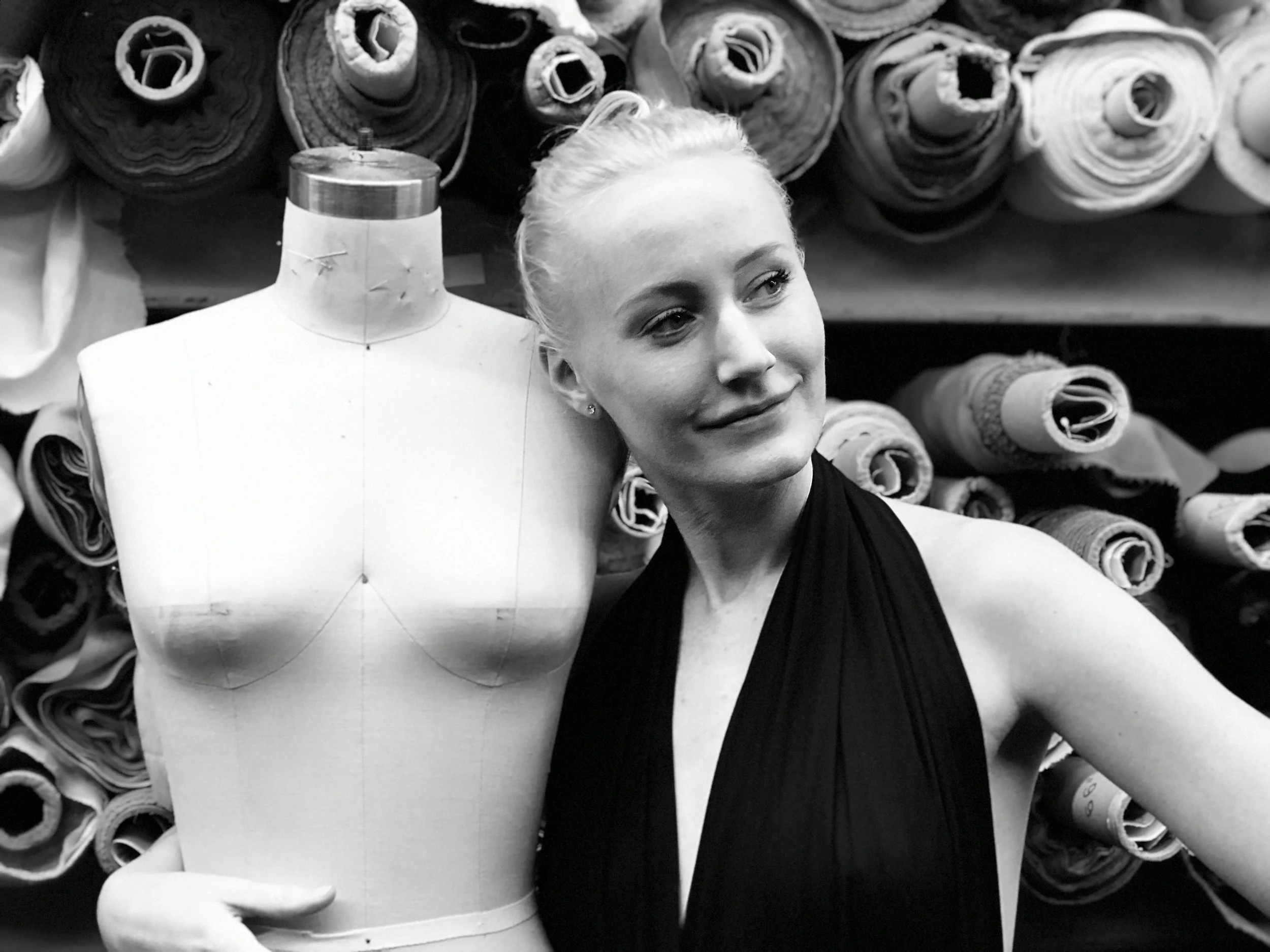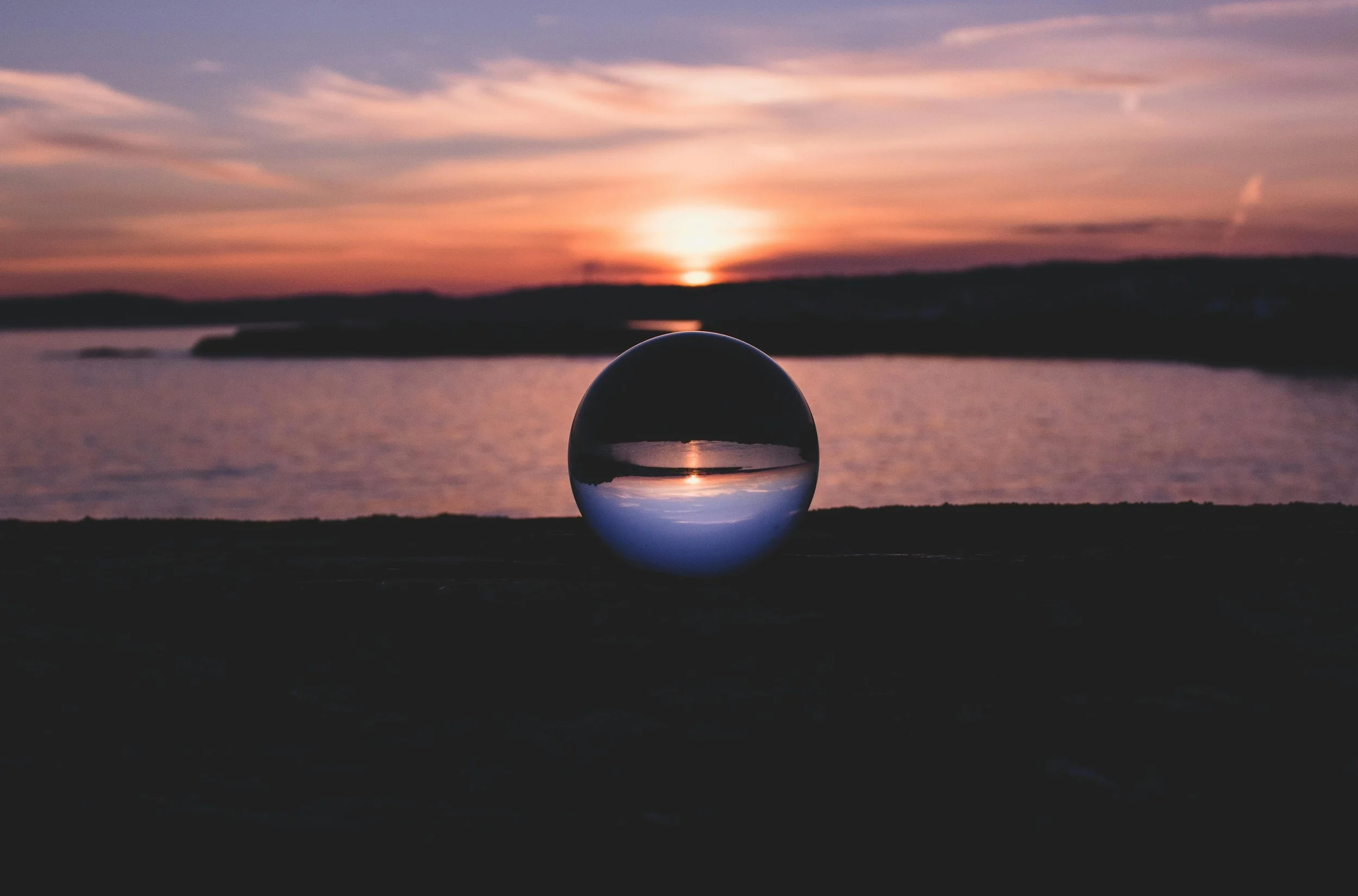Today is the Winter Solstice ☀️
Perfect day to remind you of the fact that your unique ways are a divine blessing!
Baby I Love Your Way!❤️
Guitar: Nicolas Groskopf🇯🇲
Feature In Bold Journey Mag
I was featured in Bold Journey Magazine earlier this month.
Read an excerpt below and check out the full article via this link here:
Full Article
Hi Seena, really happy you were able to join us today
and we’re looking forward to sharing your story and insights with our readers.
Let’s start with the heart of it all – purpose.
How did you find your purpose?
I found my purpose by following my own artistic and healing journey.
My favorite thing about performing is that I’m able to offer a total vibe change and healing to the audience, using my voice.
In addition to this, by working with my own energy field and nervous system,
I discovered how powerful somatic and energetic work can be—not just for me, but for everyone.
That realization led me to create Seena Energetics in New York, where I guide people through Spinal Energetics and Network Spinal-informed sessions.
My purpose is about helping people reconnect to who they really are and why they are here on the deepest level.
Life is a limited-time opportunity.
Every session of somatic energy healing in New York that I offer is rooted in guiding people back into harmony with their bodies,
their energy, and their consciousness.
You can never go wrong with investing in yourself and your own well-being.
Appreciate the insights and wisdom.
Before we dig deeper and ask you about the skills that matter and more,
maybe you can tell our readers about yourself?
I’m a Norwegian singer and energy practitioner based in New York.
I’m extremely passionate about reminding people of their own greatness;
My vehicles for doing so is my music and energy practice.
Actually, I believe music and energy are two terms for what in reality is the same thing.
Performing with my band all over the world, I recognized the power music holds with invoking and directing our energy.
As life unfolded, I found myself experiencing an incredible healing modality that works with the music of the nervous system; Network Spinal.
Fast forward, I attended all Network Spinal seminars and also got certified in a similar method, Spinal Energetics.
Currently I’m under the tutelage of world-renowned energy practitioner and chiropractor Dr. John Amaral,
as seen in Gwyneth Paltrow’s Netflix special ‘Goop Labs’, learning his method of advanced Somatic Energy Healing.
It’s equally exciting and humbling to serve people through my practice in New York, Seena Energetics.
I use refinements from Network Spinal, Spinal Energetics, Somatic Energy Healing and Sound Healing in sessions.
I regard what I – and similar practitioners – offer, as the next evolution in nervous system care.
Every person is unique, and it’s really important to me to truly see each individual.
This is why each session is tailor-made for each client’s specific energetic and somatic makeup.
In short, my practice is about helping people go from fight or flight to flow and connection.
This frees up energy that was previously stored as tension or pain,
and helps each person direct that newfound energy into more conscious, vibrant and life-affirming existence.
Full Article:https://boldjourney.com/meet-seena/
Healing Jazz
My favorite version of this jazz standard, You’d Be So Nice To Come Home To,
is featured on the Chet Baker Live In Tokyo record..🍫
Hope you enjoy my take on it, as well.
Guitar: Ermis Michail
Kalimera Ti Kanis - Seena (Yiannis Parios Cover)
Shout-out to Nicodemos - my taxi driver here in Cyprus that showed me this beautiful song.
Translated lyrics below!
Good morning how are you
Always be well
When you are near me
And when you are away
I hope each day
Is a new start
Good morning how are you
I love you very much
Good morning how are you
Always be well
Don't lose your courage
Keep your head high
Good morning my happiness
Good morning life
Good morning how are you
I love you very much
Jah Is Love - Seena (Clinton Fearon Cover)
Let’s turn up the volume on that unconditional love!
❤️🔥One love!!!!❤️🔥
Life Is An Ongoing Process Of Refinement
How we structure our subtle energy bodies in this lifetime matters more than most realize.
When we pass through the gate of death, the only thing we can take with us is how we spent our life force by focusing our consciousness.
Many spiritual and healing traditions talk about the different layers of the subtle energy body. The traditions I work within teach that it is possible for us to strengthen these layers in a positive way, through our everyday thoughts and actions. By the same token, it is also possible to weaken them by creating imbalances. By repeatedly engaging in self-development work — both on our own and with a skilled energy practitioner — we can deepen our consciousness and structure our subtle energy bodies in beneficial ways. Life becomes a practice and an ongoing process of refinement. Becoming aware of imbalances in our thinking and energy field, self-correcting, and strengthening beyond healing are keystones of my energy practice.
Specifically, I work with the emotional layer, also called the psychic layer, and the mental layer, also called the noetical layer. Depending on the tradition, these layers can also be divided into further sub-layers, such as lower mental (executing layer of consciousness) and upper mental (archetypal layer of consciousness).
These layers need to be balanced and strong in order for us to evolve.
There are several exercises, visualizations, and breathing techniques we can do on our own to support this process, which I will be sharing in my upcoming energy e-course, launching later this year.
In a session with me, I assess your body — and specifically your spine — for tension patterns, which I then aid your energy system in resolving on its own. I’m there to help create a new awareness for your nervous system, which in turn creates potential for increased awareness of your subtle energy bodies and their potential.
Our subtle energy bodies feed our consciousness. This means that our consciousness can expand when our energy bodies are structured well.
Said another way: The goal is to attune your personality self to your soul self so you can bring the gifts only you can bring to this world. It is also to create solidity in your subtle energy bodies that will benefit your soul long after the personality self has departed from the earth plane.
This is an article from my writing space on Medium.com. Visit seenamusic.medium.com to read more articles with my take on energy, consciousness and healing.
Make $250/hr As A Fit Model!
It’s here!
After over ten years in the industry I just launched my new course on how YOU can become a fitting model,
making rates between $250 - $350 per hour.
As one of New York’s most in demand fitting models,
I’m thrilled to share my unique insights with you,
so that you can have a long term career as a fit model.
Being a fitting model in New York is just as a unique a job as it is demanding.
Things I cover in the course:
How to get castings with or without an agent, how to actually do the job as a pro,
rates, terms and invoicing
…and much more!
Purchase the course on my New York Fit Model site by clicking HERE.
The Space Between Us
When two energy fields interact, a third space of possibilities is created.
Why is it that we instantly have an affinity for some, while others seem to bring out our wounds front and center? Others still, may present as a confusing mix of the two.
From an energetic perspective I think we’ve all experienced how engaging with someone that has a somewhat related - or inversely related - life experience to us, can be the catalyst for becoming aware of our own blindspots at a deeper level.
This can lead us closer to healing. Let me explain.
If you think back at your life so far, have you met people who so clearly came into your life to bring out the best in you? They act as liberators of your potential because they themselves are free from the limiting beliefs that you entangled yourself in.
Interacting with them creates a new vista of possibilities for you.
On the other hand, there are also individuals who have a similar wound to us, but sometimes in reverse. They come into our lives, just as we come into theirs, and the two interacting energy fields create this new, third space which can be a really beautiful zone for healing, as well. It’s different from trauma-bonding in that the type of situation I’m describing here helps us see our own condition from a slightly different angle. We can see our issue from a higher level and experience it from an archetypal plane, through the vehicle of our interaction.
This is one of many reasons why it is always so important to be present and open-minded with everyone we meet. We might not realize what the interaction could mean on a spiritual level until much later. And we might miss it, and the gifts it offers, entirely, if we are unaware.
This is an article from my writing space on Medium.Com:
Head on over to medium.com/@seenamusic to read more of my thoughts regarding energy, spirituality and consciousness.
I Believe In Love
Jah is love and love is Jah
Not for sale borrow rent nor lease
Jah is love and love is Jah Jah so it is
This is not a claim this is a revelation
Jah is love
Love is Jah
Love is my salvation my pride and joy
My salvation
This is not a toy
So don't play with it
Don't play with it
I believe in love and
I will protect it with conviction
I believe in love and
I will protect it without condition
Jah is love
Love is Jah
Jah is love
Love is Jah
Love is my passion love is my religion
Love is my thing from deep within
True love is my thing my thing my everything
And I wish the same for everyone
Jah is love
Love is Jah
Love is my salvation my pride and joy
My salvation
This is not a toy
So don't play with it
Don't play with it
I believe in love and
I will protect it with conviction
I believe in love and
I will protect it without condition
Jah is love
Love is Jah
Jah is love
Love is Jah
Living Is An Art
Livin' is an art
You've got your canvas and I've got mine
Livin' is an art
You've got your easel and I've got mine
Livin' is an art
You've got your brush and I've got mine
Livin' is an art
Using the colours of the universe
Livin' is an art
How perfect could this be?
Livin' is an art
Do the work and you will see
Livin' is an art
Check the power of a smile
Living is an art
Say we're jammin' with the rhythm
What's your style?
Painted pictures
Hanging on the wall of life
It doesn't really matter
Which is the prettiest
Everyone is responsible
For their own picture big or small
Everyone is responsible
For their every rise and fall
Make your life the greatest work of art! No-one else can do you, but you. - Seena
Devotion
Healing Is Not An End To Itself
Healing is important, but it’s not an end to itself.
Work to stabilize your energy system.
To heal - to be whole - is to be coherent enough in your
consciousness and energy to do the work you actually came here to do.
You can do it <3.
See You On Tik Tok
Follow me on TikTok and Youtube for daily drops about my music and energy healing practice in New York.
I post reflections on everything Seena Energetics : Vocal Sound Healing and Spinal Energetics in New York.
And I also share opinions and feelings on spirituality and our collective healing journeys,
as well as songs, inspirational mini-raps and guides to cool spots around the world.
Blessings!
The Mind Leads The Qi
The mind leads the qi.
As an artist I consciously use this awareness to create.
And as a healer I am also constantly aware of this;
in a session with me you can trust that I am continuously present with you, with my entire focus.
I believe that human beings are some of the most sensitive and advanced beings in the universe.
Not in terms of technology.
In terms of what we can sense and do with our consciousness.
Most of us haven’t fully developed this part of our being yet,
as we currently live in an environment where it’s not conducive to do so.
Our current way of going about things can be likened to jumping around with one leg tied up,
when trying to walk.
We have the potential for so much more.
I believe this is about to change, if we allow the existing impulse to grow.
Instead of increasingly outsourcing our personal power to technology.
How are you using your mind to lead qi?
Your body’s qi status is closely related to how you use your mind.
What are you focusing on in your day to day?
Are you using your mind to integrate emotions, without letting them damage your energy system?
Are you consciously training your mind to lead qi where it is most beneficial for you?
A large benefit of Seena Energetics is becoming increasingly aware of your own qi.
Book a session or read more on my Seena Energetics page.
When The Clock Strikes Coucou
My jazz trio will be serving up Michelin star jazz standards at Le Coucou tomorrow, New Year’s Eve!
After a hiatus performing other places for NYE I’m thrilled to return for the third time to this elegant Soho gem.
Bookings via Resy HERE.
Happy Hanukkah
My mom and I baked these two seeded challahs.
One of my favorite holiday traditions is baking a challah together with my mom.
This year we tried a cool recipe with seeded strands - it makes braiding a breeze!
Here is the recipe:
Ingredients, two breads:
665 g flour
20 g dry yeast
2 teaspoons of salt
60 g sugar
0.4 dl olive oil
4.2 dl luke warm water
Toppings:
about 1 cup of each topping
1 egg
Directions:
In a mixer bowl, combine flour, sugar, salt, oil and active dry yeast.
2. Using a mixer with a knead/hook attachment or your hands, slowly add warm water to the dry ingredients.
3.Mix until the dough comes together, ensuring it's moist and not too dry.
4. Knead the dough in the mixer for 12 minutes or by hand for 20 minutes.
5. Cover with a kitchen towel, then let it rise in fridge overnight.
6. The next day: Divide the dough into 18 equal balls of approx 65 grams each and cover for a second round of rising of 25 minutes.
7. Roll each ball into a 14-inch strand. Wet a paper towel, roll one strand in it, then coat in your toppings. Repeat for 6 strands, 2 of each topping.
8. Take 2 plain strands and set one topping-coated strand, in between them. We used: poppy seeds, sesame seeds and flax seeds. Repeat for the remaining strands. Braid together.
9. Place the braided challahs on a baking sheet lined with parchment paper. Cover and let it proof for 20 minutes.
10. Preheat the oven to 350°F/176°C. Beat one full egg and brush it only on the plain strands (not seeded ones!) using a thin paintbrush.
11. Bake for 35-40 minutes or until the challah has a golden deep color.
A Day At The Office
Julian Marley and Seena at Tuff Gong Studios, Kingston, Jamaica, December 2024.
You Are The DJ
Everything is music and you are the DJ of your own existence.
Sums it up
This video pretty much sums it up.
Keep in mind everything we are NOT able to measure.
Measuring and technology is amazing, but the potential of man is much, much greater.
All About Candace
If you only read three more books this year, make them:
The Molecules Of Emotion by Dr. Candace Pert (1997)
All You Need To Feel Go(o)d by Dr. Candace Pert (2007)
Candace Pert: Genius, Greed and Madness In The World Of Science by Pamela Ryckman (2023)
The books by Dr. Pert will make you familiar with her concepts and discoveries,
including that of the molecules of emotion,
if you’re not already in the know.
They will make you remember the importance of feeling your feelings and integrating them,
after which it’s equally important to consciously choose what to direct your attention towards for the betterment,
or maintenance of, your health.
How you choose to use your prefrontal cortex matters;
interrupting your own negative thought patterns is key,
as how you feel affects you down to a chemical level.
Be generous towards yourself and others. Always.
To me, the books also serve as reminders of how we are all slightly different versions of ourselves,
depending on the emotional state we are in that day.
It doesn't excuse bad behavior,
but it makes it easier to understand and forgive when someone displays a less resourceful side of themselves.
We have tons of sensory receptors which has a memory of everything we’ve ever sensed
along the afferent (sensory incoming) nerves going into the spinal cord.
This means that we are constantly experiencing “reality”
through a prism that’s unique to us.
I’ve talked about this before in my TikToks and Youtubes from a more esoteric perspective;
Candace proved the same thing a long time ago, using hard science.
We are all receivers of signals, impulses and impressions;
but these frequencies are conducted through our own filter.
That’s why it is so very important not to judge or assume, and to remain open to becoming increasingly aware of our own blind-spots, also know as shadows.
The last book on the list is a truly fascinating read about Candace by Pamela Ryckman.
It’s also available on audiobook and gives a 360 degree view of this most inspiring and sharp woman who,
like all of us, had her share of professional and personal triumphs and upsets.















